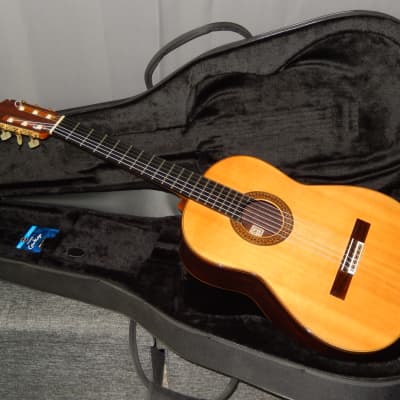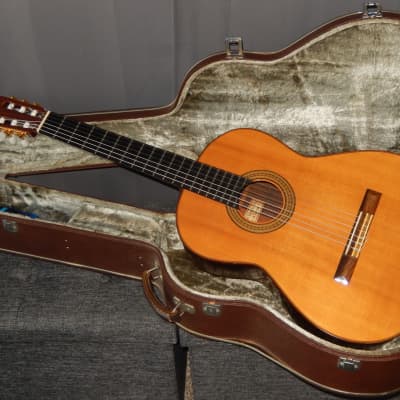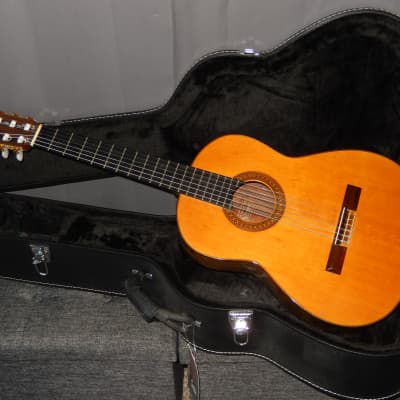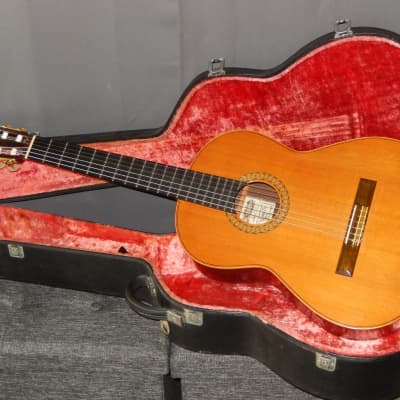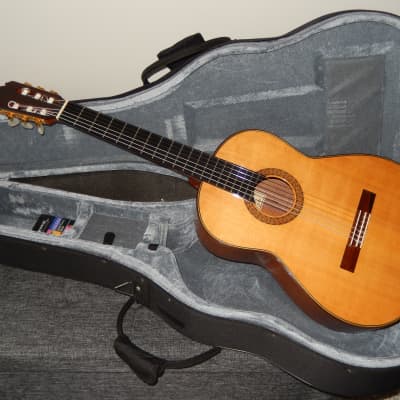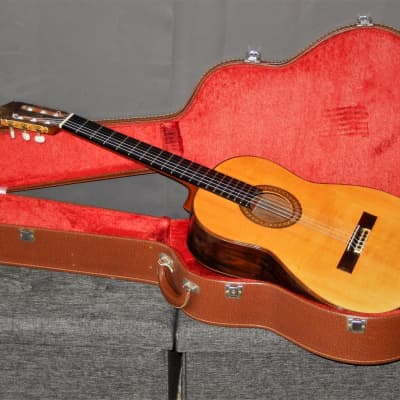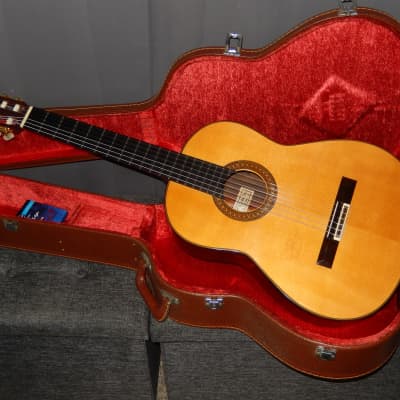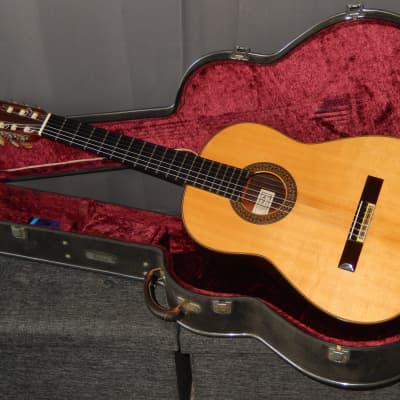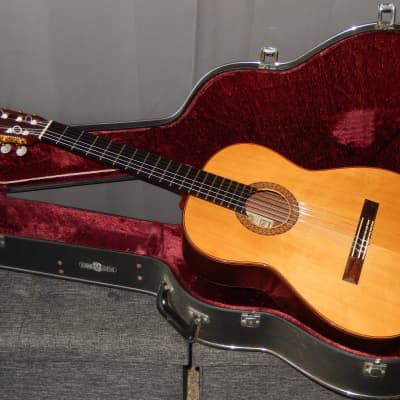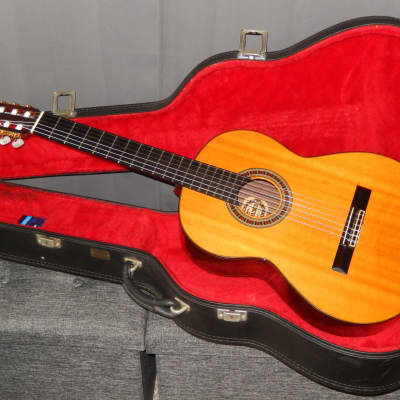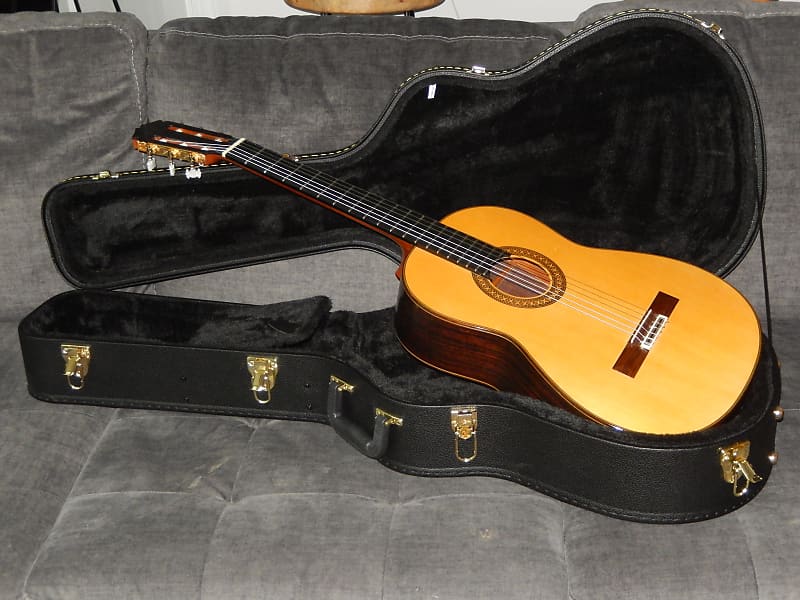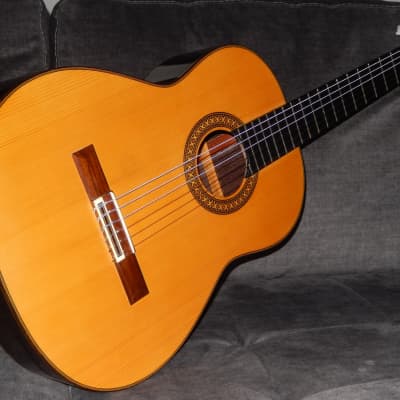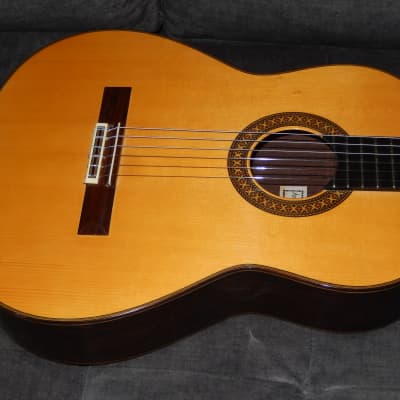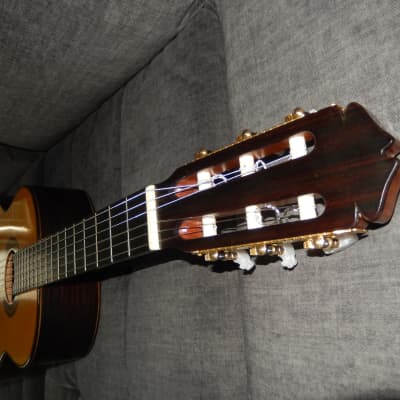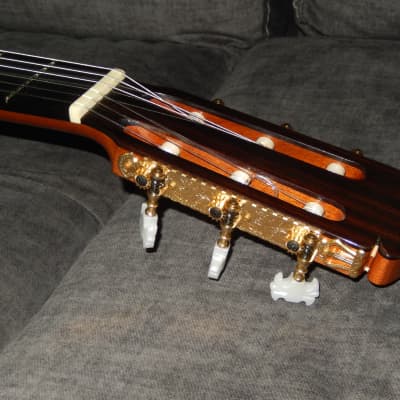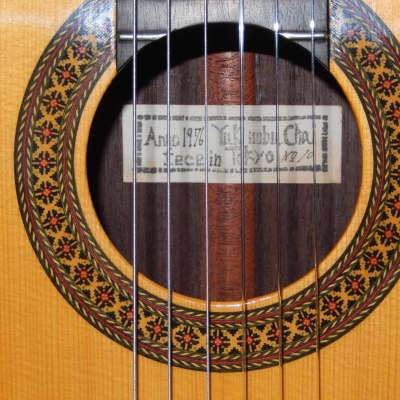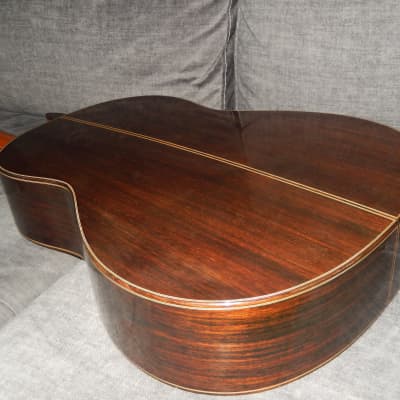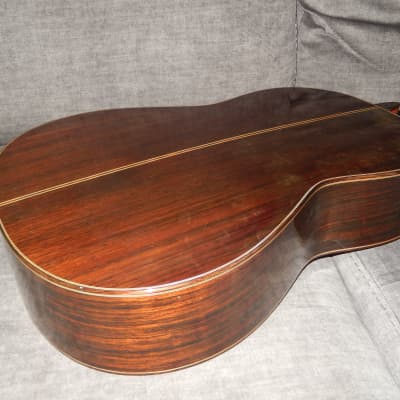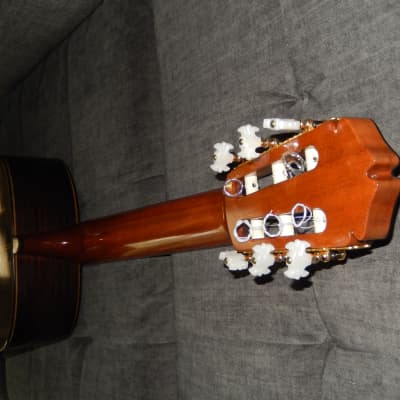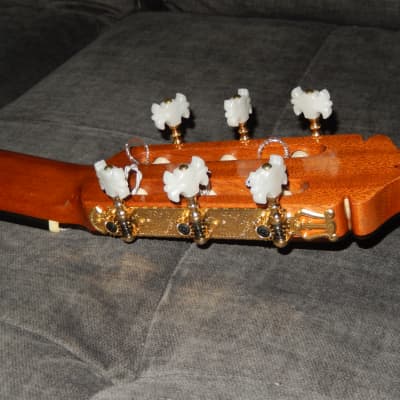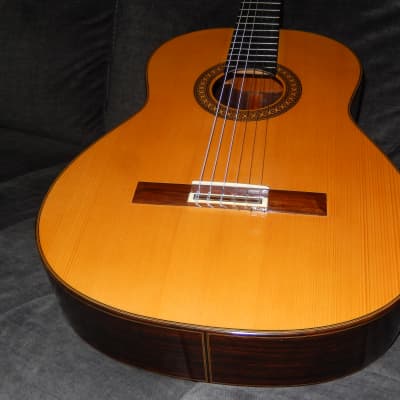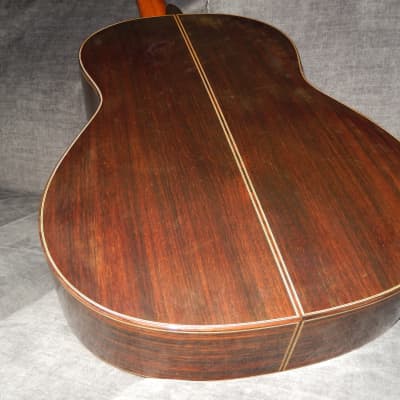Yukinobu Chai Classical Concert Guitar No10 1976
This guitar was made in 1976 by Master Luthier Yukinobu Chai. Yukinobu’s career started in late 1960s and over the years he became one of the highest respected luthiers in Japan. Most likely the major reason for that were very moderate prices for his wonderful instruments.
In that respect Yukinobu had business philosophy very similar to that represented by Ryoji Matsuoka, Kazuo Yairi or brothers Hiroshi and Mitsuru Tamura. In 1983 top Masaru Kohno model 50 or Sakazo Nakade Master 50 were priced 500 000 yen. In 1984 top Masaru Kohno model Maestro or Sakazo Nakade Master 80 were priced 800 000 yen. By 1985 Yukinobu Chai and Tamura brothers were still pricing their top models at 500 000 yen even though their instruments sounded no different than those made by the “elite” luthiers. In 1985 top R.Matsuoka models were M200 & MH200. Kazuo Yairi's top model was YC200.
In early 1980s Yukinobu became the major supplier for Niibori School of Guitar Ensemble, making not only whole range of prime (regular) models but also many alto, soprano, bass and contrabass guitars. Since Yukinobu's passing in 2011, his workshop is managed by his son Yukio, a great luthier on his own. Yukinobu's most famous pupils are Ichizo Kobayashi, Tatsuro Kobayashi, Sakae Ishi and Kuniyoshi Matsui.
In early/mid 1970's Yukinobu was still relatively unknown luthier and his prices were actually lower than those proposed by Tamura brothers for similar grade guitars. Until 1974 Yukinobu's model 10 was made with solid figured Brazilian Rosewood b/s. Until early 1976 his model 10 was made with Jacaranda (straight-grain Brazilian Rosewood) b/s. During the same era (1975/76) Yukinobu's models 6 and 8 were made with solid Indian Rosewood b/s.
This guitar being priced 100 000 yen in 1976. Just like many other less prominent Japanese luthiers of that era, Yukinobu Chai simply had to deliver much more for the same price in comparison with Masaru Kohno models. In fact, you will never find Kohno No10 that would sound even close to guitar you are looking at.
This guitar offers immense volume and super response, combined with deeply charming (characteristic to BR) and colorful tonality: sweet, very colorful & ringing trebles, somewhat metallic & deeply resonating and full of overtones basses, all well balanced, with superb note clarity and separation, and all with very impressive sustain. With its current action it is simply a “joy to play”. If you wanted to purchase the same class brand new guitar made by leading Japanese luthier, you would have to pay no less than $6000.
This guitar remains in "excellent for its age" overall condition. Its body bears few tiny dents, scratches and abrasions, all aberly visible at first glance. The "fingertip-like" discolorations within the finish on the back are greatly exaggerated on the pictures. In regular light they are rather mild, and guitar's back is deeply brown and glossy. Such discolorations are quite common on Japanese made guitars of that era. They are however limited to guitars made with Brazilian Rosewood and finished with commonly used by Japanese luthiers (shellac-like) Cashew lacquer. Very importantly its neck is straight, fingerboard and leveled frets are in very good condition and action very "player friendly".
Specifications:
Top: Solid Spruce/Cashew lacquer
Back & Sides: Solid Straight Grain Brazilian Rosewood/Cashew lacquer
Neck: Mahogany
Fingerboard: Ebony
Scale: 650 mm
Nut width: 51 mm
Its action is set to 3.50 mm under E6 and 3.00 mm under E1, with still extra room on the saddle.
This guitar will be shipped in brand new Musician's Gear hard-shell case.
The key to understand value of vintage
Japanese guitars is to acknowledge galloping price inflation (devaluation of
Japanese yen) during 1960s & 1970s. This inflation slowed down in 1980s.
During 1960s and most of 1970s model numbers
of Japanese guitars were strictly interconnected with their prices in Japanese
yen. By early 1980s and during following decades model numbers were no longer
strictly associated with their prices. Some Japanese guitar makers introduced
model names instead of model numbers. Others were still using model numbers
with addition of letters and/or other symbols.
It is then important to understand that two
Yamaha GC10 guitars made 10 years apart are two instruments of totally
different class. The same applies to any other Japanese
maker/brand.
The logical way to estimate the true class of
any given Japanese made instrument is to compare its price with the average
annual salary of wage workers in Japanese private sectors. This salary was: 450
600 yen in 1965 - 825 900 yen in 1970 - 1 868 300 yen in 1975 - 2 689 000 yen
in 1980 - 3 163 000 yen in 1985 - 3 761 000 yen in 1990 - 4 107 000 yen in 1995
- 4 082 000 yen in 2000.
Any guitar priced 100 000 yen in 1970
(labelled as No10 or No100) would be priced 200 000 yen in 1975 (relabeled to
No20, No200 or 2000), 300 000 yen in 1977 (labelled as No3, No30 or 3000) and
500 000 yen by 1985 (labelled as No50 or 5000).
Starting in 1977 Masaru Kohno introduced his
new models No40 priced 400 000 yen and No50 priced 500 000 yen. By early 1980s
Kohno started using model names instead of numbers and was steadily raising
their prices without changing model labeling. His very top model 50 became
model “Special”, and a decade later it became model “Maestro”. Naturally, all
other Japanese guitar makers were doing similar pricing (labelling) upgrades.
Knowing all of that, you can bet on that
Masaru Kohno No50 made in 1982 is practically the same grade instrument as
Kohno No20 made in 1972, or Kohno no 30 made in 1975.
In early 1970s the lowest Ryoji Matsuoka (all plywood)
model was 10, followed by (solid top) models 15, 20, 25, 30, 40, 50, 60, 80 and
(all solid woods) models 100 and 150. Models 50, 60 and 80 were made with
non-solid figured Brazilian Rosewood (double) back and sides and top model 150
was the only one made with solid figured Brazilian Rosewood b/s.
In 1980 the lowest Matsuoka model was (all plywood)
20, followed by (solid top) models 30,40,50, 60 and all solid woods models
80,100,150 and 200. By 1990 the lowest Matsuoka model was M40 and the highest
was M300. By 2010 the lowest Matsuoka model was M50 and the top model was
M270.
You can bet that Ryoji Matsuoka model 50 from
1980 is of the same grade as model M100 from 2000, model 100 from 1980 is of
the same grade as model M150 from 2000, model 150 from 1980 is of the same
grade as M200 from 2000 and model 200 from 1980 is of the same grade as model
M300 from 2000.
It
is important to mention that if modern era luthiers are using 40+ years old
woods to make an “all solid” wood classical guitar, its price is minimum $8000.
All
vintage guitars made with Brazilian Rosewood are especially precious, including
those made straight grain varieties and those with non-solid b/s.
Because
response and tonal properties of Spruce soundboards are improving over time,
long seasoned Spruces are far more precious than long seasoned Cedars.
It
is not very difficult to find out what are current prices of such guitars made
by world’s leading luthiers.

